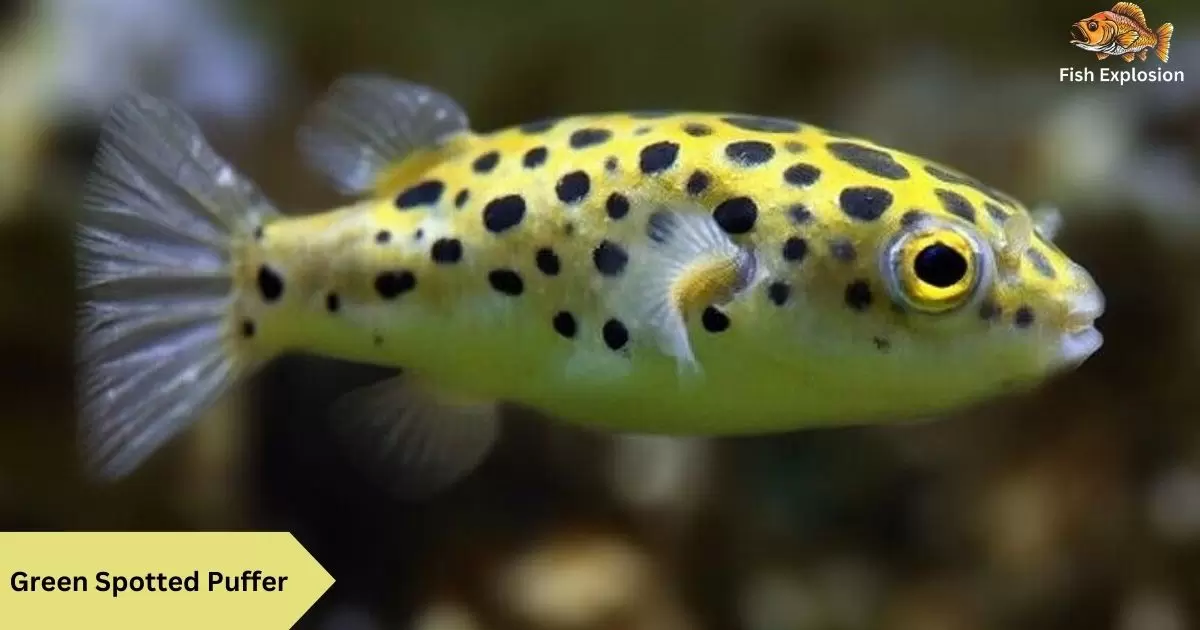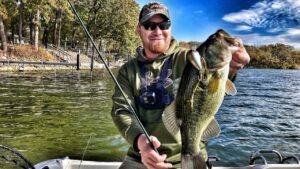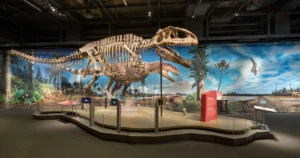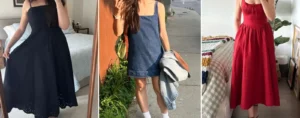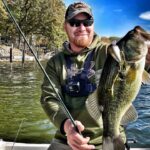The green spotted puffer (Tetraodon nigroviridis) is a fascinating marine fish species known for its unique appearance and interesting behavior. These puffers have a bold green coloration with distinctive dark spots, making them eye-catching additions to a saltwater aquarium. They typically grow to a maximum size of around 12 inches (30 cm) in length. While green spotted puffers are generally peaceful when well-fed, they can become aggressive towards tank mates, especially when it comes to food. Therefore, they are best kept with larger, semi-aggressive fish species and should be provided with plenty of hiding spots and a varied diet consisting of meaty foods like crustaceans and mollusks. With proper care, these puffers can make captivating and entertaining aquarium residents.
Species Summary
A species summary concisely encapsulates key facts. It highlights morphological attributes, behavioral tendencies, habitat preferences, and other essential details.
The compact overview presents a snapshot of a species’ defining characteristics. This informs understanding of an organism’s ecological role and adaptations for survival.
Read More: “20 Best Fish For A 10 Gallon Aquarium”
Appearance
The green spotted puffer (Tetraodon nigroviridis) is a strikingly beautiful fish with a distinctive appearance. Its body is covered in a bright green coloration, adorned with numerous dark spots or ocelli that vary in size and pattern.
These spots can range from small dots to larger blotches, creating a captivating contrast against the vibrant green hue. The puffer’s body shape is rounded and robust, with the ability to inflate itself with water or air as a defense mechanism.
Its eyes are positioned towards the top of its head, giving it an almost comical expression. When fully grown, the green spotted puffer can reach up to 12 inches (30 cm) in length, making it a eye-catching centerpiece in a marine aquarium.
Juvenile vs Adult
| Characteristic | Juvenile | Adult |
| Size | 2-4 inches (5-10 cm) | Up to 12 inches (30 cm) |
| Coloration | Bright green with faint spots | Vibrant green with distinct dark spots |
| Behavior | Generally shy and reclusive | More bold and territorial |
| Diet | Primarily feeds on small crustaceans and mollusks | Accepts a wider variety of meaty foods |
| Aggression | Typically peaceful towards tankmates | Can become aggressive, especially during feeding |
| Habitat Requirements | Smaller aquarium (30-55 gallons) | Larger aquarium (75+ gallons) |
| Lifespan | 5-7 years | Up to 10 years with proper care |
Male vs Female
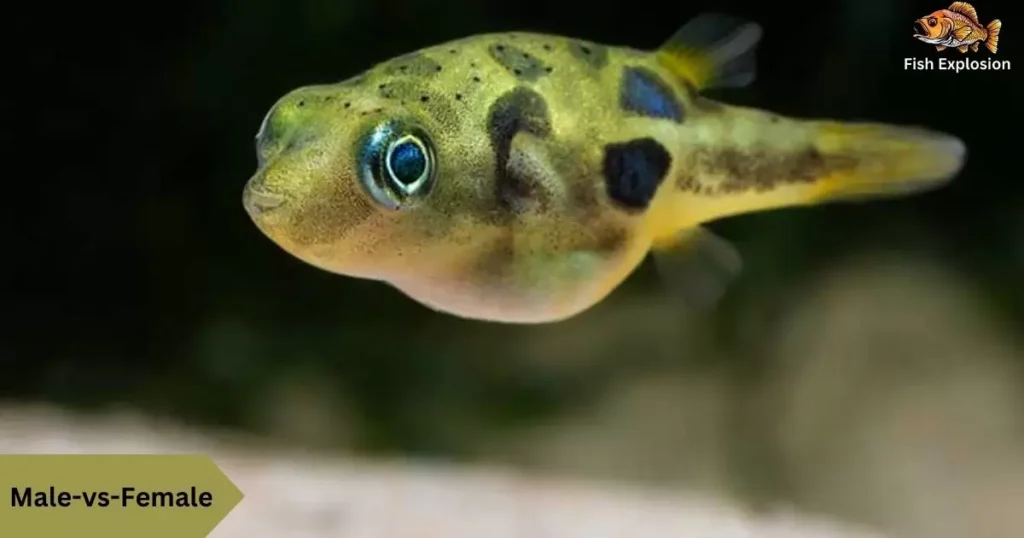
Male and female green spotted puffers are difficult to distinguish based on their external appearance alone. However, during breeding periods, males may display more vibrant coloration and become more aggressive in defending their territory.
Females typically grow larger than males and can be recognized by their fuller body shape, especially when carrying eggs. Beyond these subtle differences, both sexes share the same distinctive green color with dark spots that characterize this captivating puffer species.
Size
The green spotted puffer is a moderate-sized fish, typically reaching a maximum length of around 12 inches (30 cm) when fully grown. In captivity, they may not attain their maximum potential size due to the constraints of an aquarium environment.
However, providing them with a spacious tank and proper care can help these puffers thrive and reach a respectable adult size.
Green Spotted Puffer Care
Providing proper care for green spotted puffers is essential for their health and well-being in a home aquarium. These puffers require a large tank with plenty of swimming space, as they can grow up to 12 inches in length.
A tank of at least 100 gallons is recommended, with ample rock formations and caves for hiding spots. Maintaining optimal water quality is crucial, as puffers are sensitive to ammonia and nitrite levels. A varied diet consisting of meaty foods like crustaceans, mollusks, and fish is necessary to meet their nutritional needs.
Green spotted puffers are generally peaceful but can become territorial, especially during feeding times, so caution should be taken when introducing tank mates. Regular water changes and maintaining appropriate water parameters are key to keeping these unique puffers happy and healthy in captivity.
8 Green Kubotai Rasboras
They are a peaceful and active schooling fish species. They thrive in well-planted aquariums with plenty of swimming space. These rasboras display a vibrant green coloration with a distinct black stripe running along their body. When kept in groups of 6 or more, they exhibit interesting schooling behaviors.
Blue Dolphin Mori Juvenile
The blue dolphin mori (Cyprichromis leptosoma) is a captivating cichlid from Lake Tanganyika. As juveniles, they exhibit a striking blue coloration with iridescent speckles. These fish are peaceful when young but may become territorial as adults. Providing ample rockwork and caves is essential for these cichlids to feel secure.
8 Miyuki Medaka Platinum Blue Japanese Rice Fish
The Miyuki medaka is a stunning variety of the Japanese rice fish, renowned for its platinum blue coloration. These peaceful fish prefer a well-planted aquarium with plenty of hiding spots.
Keeping them in groups enhances their vibrant colors and schooling behavior. Providing a varied diet of live and frozen foods is essential for their optimal health.
Sparkling Gouramis
Sparkling gouramis, also known as croaking gouramis, are a unique and fascinating species from Southeast Asia. These fish are characterized by their iridescent scales that shimmer with a metallic luster.
They are peaceful community fish but can become territorial during breeding periods. Providing ample surface vegetation and a well-planted aquarium is ideal for their unique labyrinth breathing requirements.
- Lifespan: The green spotted puffer has a lifespan of up to 10 years with proper care and optimal water conditions in captivity.
- Tank Size: These puffers require a large aquarium, with a minimum tank size of 100 gallons recommended to accommodate their adult size and territorial nature.
- Acclimation: Acclimation When introducing new green spotted puffers to an aquarium, proper acclimation is crucial to minimize stress and increase their chances of a successful transition.
Blue Mystery Snail
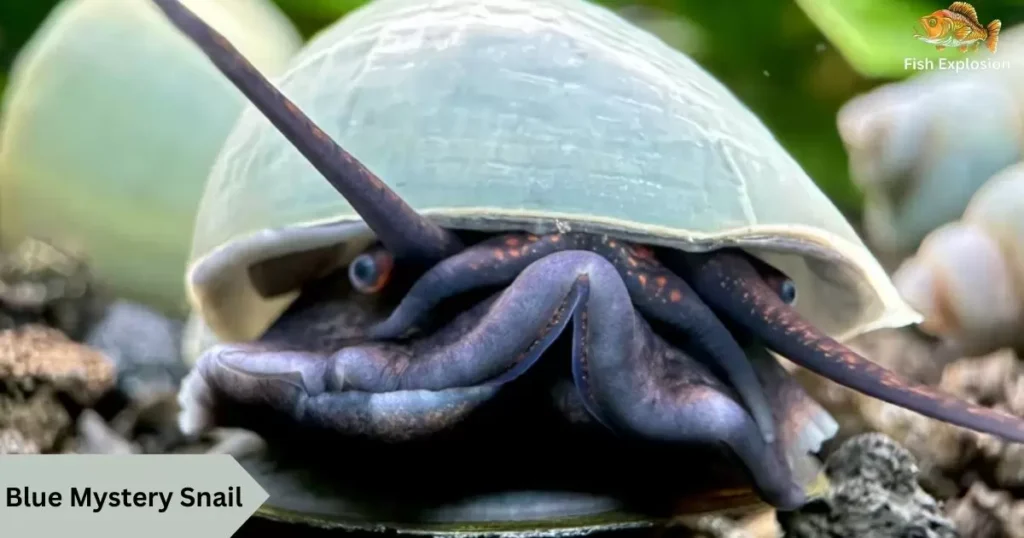
This snail species is attractive but hardy. Their striking azure hue, along with patterned shells, make these snails stand out. Known to consume algae and detritus, Blue Mystery Snails aid aquarium maintenance.
5 Malaysian Trumpet Snails
Prolific burrowers, this group improve soil texture and nutrient distribution. The small shells and waving tentacles of Malaysian Trumpet Snails signify their filtering of uneaten food.
10 Snails – Ramshorn Colony Starter
Ramshorns come in varied colorful shells and are prolific breeders. An initial population of 10 jumpstarts a lovely Ramshorn colony to control algae while adding aesthetic appeal to aquariums.
5 Fire Red Cherry Shrimp
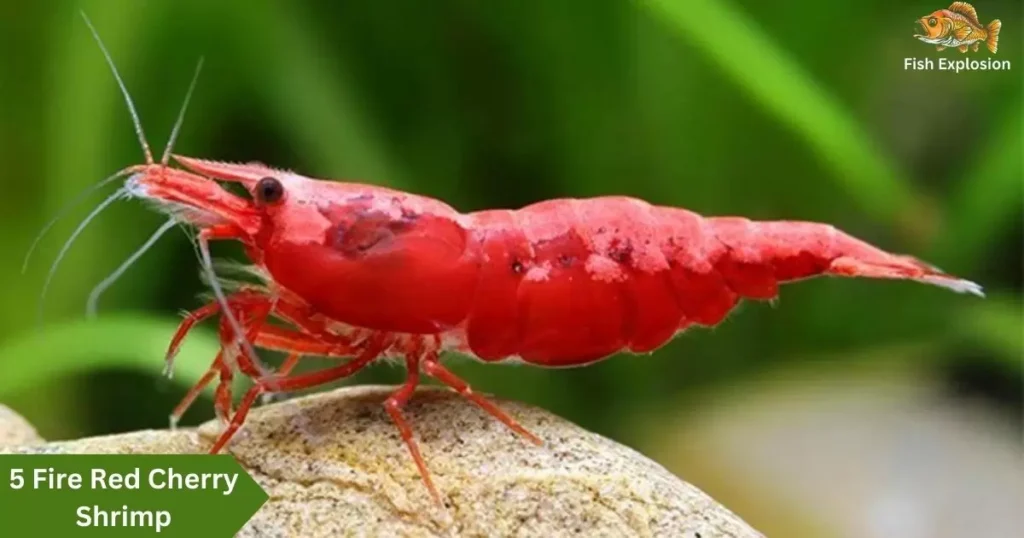
These attractive shrimp boast a vivid crimson hue. As a group of 5, they will socialize and breed swiftly. Fire Red Cherry Shrimp require pristine water to thrive and will appreciate plant cover and biofilm to graze.
Water Conditions
Consistently maintaining water parameters within the ideal ranges is critical for shrimp survival. Test and adjust pH, hardness, nitrogen compounds and other metrics weekly to keep conditions shrimp-safe.
Tank Setup
Shrimp prefer a mature aquarium with established beneficial bacteria. Include aquatic plants to absorb waste while decorating with driftwood and rocks. Proper filtration and minimal water changes prevent stress on fragile little carapaces.
20x Staurogyne Repens
This compact grass forms glossy green mats with pink undersides, adding textural appeal. Staurogyne repens spreads densely to carpet the substrate without invasive roots. It grows easily in most water conditions and flourishes with minimal lighting.
The Repens variety brings visual interest while softening the hardscape and providing grazing areas for shrimp.
Anubias Frazeri Rosette
With thick, dark green leaves elegantly edged in cream, the Frazeri Anubias variety lends structured beauty. Its compact footprint makes this low-light plant suitable for foreground and hardscape placements.
As it slowly spreads, the robust, waxy leaves persistently crowd together in neat symmetrical clusters. Frazeri’s durability and aesthetic value justify its inclusion in any aquascaping project.
Starter Pack 6 Bunches Low Light Plants–free Ship
Containing easycare species like crypts, microsword and rotala, this assortment fosters biodiversity while suiting most setups. From bushy red plants to carpeting greens, the variety nurtures coverage preferred by shrimp and fish.
Requiring just minimal care and lighting, the lush flora in this starter pack thrive to offer water purification as scaping ideals grow in.
Color Variety Pack – 6 Plants
- Includes 6 bunches of different low light plant species for vibrant color mixture
- Features red, green and bronze foliage tones to appeal to both fish and human admirers
- Compact growth of carpeting plants allows various layout options
- Hardier plants such as crypts and anubias withstand variances in water parameters
- Purple and reddish accents like ludwigia and alternanthera add visual pop
- Bushy texture contrast between plants like hygrophila and rotala
- Low maintenance needs suit new aquarists and nano tank owners
- Promotes biofiltration, oxygen exchange and shrimp/fish foraging to boost tank ecology
Common Diseases
Fish are susceptible to bacterial, parasitic and fungal illnesses in an aquarium ecosystem. By correctly maintaining water quality parameters, quarantining new additions, and observing for symptoms, many common diseases can be prevented or controlled.
Food & Diet
A nutritionally balanced diet mimicking their natural foods supports fish health and coloration. Different life stages may require specialized foods.
Provide meals smaller than the fish’s eye to avoid overeating and water fouling while meeting their daily caloric needs. Variety prevents deficiencies and promotes digestion.
Behavior and Temperament
Clownfish display bold personalities as they aggressively defend anemones from intruders. Within the safety of host anemones, pairs remain largely peaceful but may nip at other clownfish. Their inquisitive natures entertain fishkeepers.
Reef Compatibility
While defending host anemones limits territorialism, clownfish may nip at or chase slower or similar-looking fish. They thrive alongside hardy fish and invertebrates suited to similar water conditions. Careful introductions allow for judging compatibility before potential issues arise.
Malaysian Driftwood (5×7″)
This sizable piece of natural driftwood adds texture and tannins to soften hard water. Its gnarled shape provides a surface for algae, biofilm, and invertebrates. Over time, aquatic flora may take root, further enriching the scape.
Organic Cholla Wood (3×4″)
Full of nooks for shrimp and snails, this sun-bleached cactus wood develops a natural patina underwater. As it weathers, cholla releases needed minerals while Langmuir currents stir nutrients through its branches.
Large Cholla Wood (16×1″)
This unusually long wooden array lends visual depth and complexity when suspended at heights or arranged as a centerpiece. Countless crevices inspire microhabitat formation for fry and zooplankton among its branches.
Small Cholla Wood (10×0.75″)
Ideal as accent pieces nestled into groupings or decorating open spots, these delicate twigs add framing touches. Over months, their surfaces morph into diatoms, and then ostracods take hold to evolve into appointed shrimp strongholds.
Tank Mates
With timid dispositions, Corydoras prefer community tanks housing similar peaceful bottom feeders and mild midwater or surface fish. Their schoaling nature feels safest amid large, gently circulating groups.
Breeding
When stresses subside and waters warm, corydoras often spawn readily in mature tanks. Depositing eggs on leaf bottoms or sides overnight, they benefit from gentle currents, aiding fry survival and growth as small replicas of their parents.
Where to Purchase
Local fish stores stock various Cory species suited to community aquariums. Online aquarium shops also offer wide selections and may include rare, conservancy-purpose breeds. Choose vendors certifying fish health and humane, survivable shipping practices.
FAQ’s
Can pufferfish have tankmates?
Pufferfish generally do best as solo pets or in species-only tanks due to their territorial nature.
What size tank does a green spot puffer need?
A green spot puffer needs a minimum of 20 gallons, with 30 gallons or more recommended.
How big are green pufferfish?
Full grown green pufferfish average 4-6 inches in length.
Can you keep pea puffers with other fish?
Pea puffers are most compatible with small nanofish or shrimp tanks, as they may nip at larger tankmates.
Conclusion
Green spotted puffers make entertaining and colorful aquarium pets when kept with their unique needs in mind. As territorial fish, they are best housed alone or in species-only tanks to avoid conflicts.
While their miniature size is appealing, sufficient space, filtration, and water changes are still required to sustain their active, exploratory natures. With dedication to water quality upkeep and an understanding of their dietary preferences, green spotted puffers thrive long-term under watchful fishkeeping.
Their personable behavior and hardiness make them a favorite of marine hobbyists. For those ready to stimulate these fish and accommodate their natural guarding instincts, a green spotted puffer brings dynamic motion and interest to any setup. Proper setup helps ensure these charming puffers live happy, healthy lives.
With three years of dedicated expertise in the niche of fish, my domain knowledge encompasses breeding, habitat maintenance, health management, and sustainable aquaculture practices, ensuring optimal outcomes in the aquatic realm.
